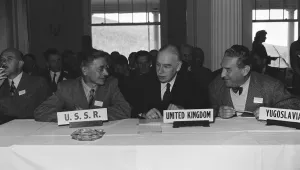International Security is America's leading peer-reviewed journal of security affairs.
Summary
NATO's 2011 humanitarian military intervention in Libya has been hailed as a model for implementing the emerging norm of the responsibility to protect (R2P), on grounds that it prevented an impending bloodbath in Benghazi and facilitated the ouster of Libya's oppressive ruler, Muammar al-Qaddafi, who had targeted peaceful civilian protesters. Before the international community embraces such conclusions, however, a more rigorous assessment of the net humanitarian impact of NATO intervention in Libya is warranted. The conventional narrative is flawed in its portrayal of both the nature of the violence in Libya prior to the intervention and NATO's eventual objective of regime change. An examination of the course of violence in Libya before and after NATO's action shows that the intervention backfired. The intervention extended the war's duration about sixfold; increased its death toll approximately seven to ten times; and exacerbated human rights abuses, humanitarian suffering, Islamic radicalism, and weapons proliferation in Libya and its neighbors. If it is a "model intervention," as senior NATO officials claim, it is a model of failure. Implementation of R2P must be reformed to address these unintended negative consequences and the dynamics underlying them. Only then will R2P be able to achieve its noble objectives
The author has written a policy brief based on this article, "Lessons from Libya: How Not to Intervene."
Listen: Podcast with Alan Kuperman and Richard Aldous at The American Interest.
Watch: Video of Alan Kuperman discussing this article at the Cato Institute.
Read: "Obama's Libya Debacle": Alan Kuperman expands on and updates this article in Foreign Affairs.
Kuperman, Alan. “A Model Humanitarian Intervention? Reassessing NATO's Libya Campaign.” Summer 2013
The full text of this publication is available in the link below.





